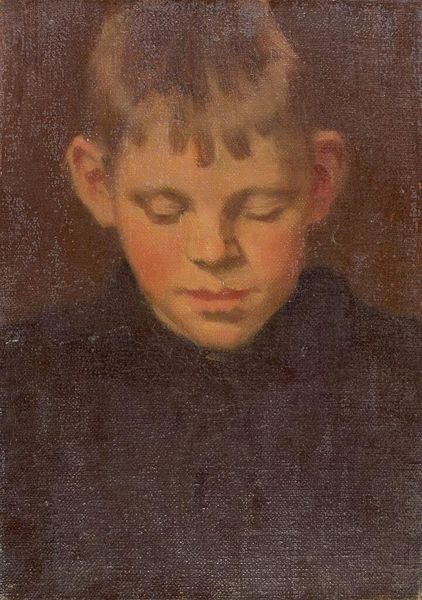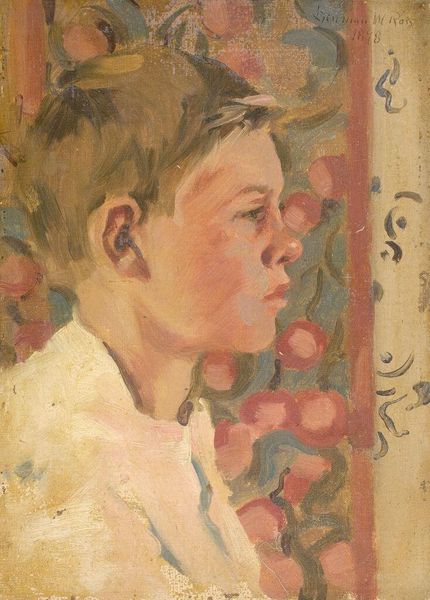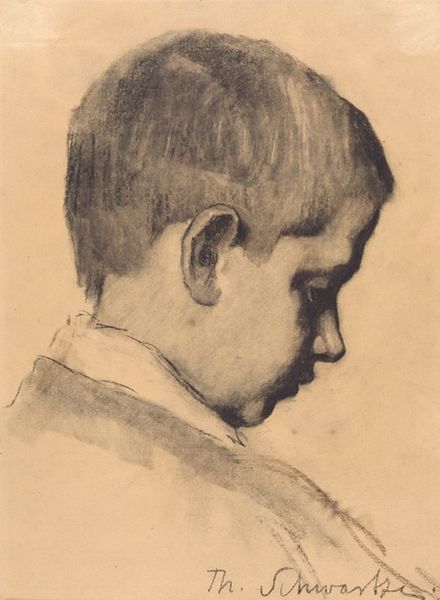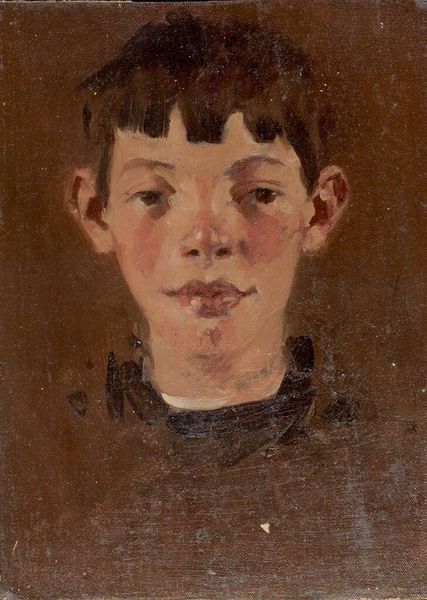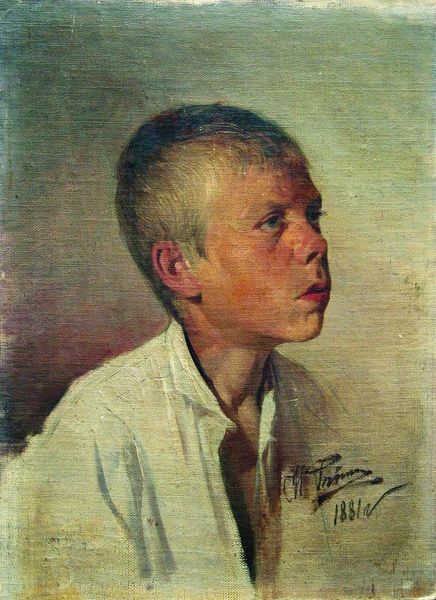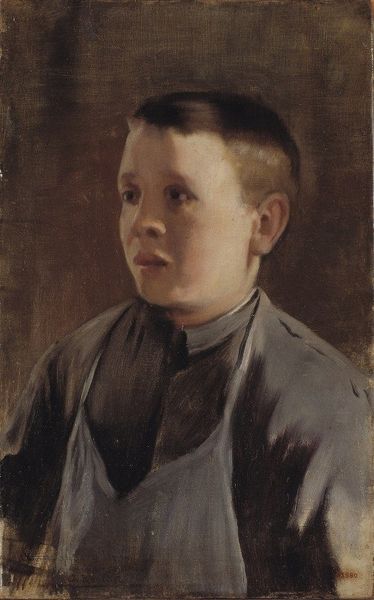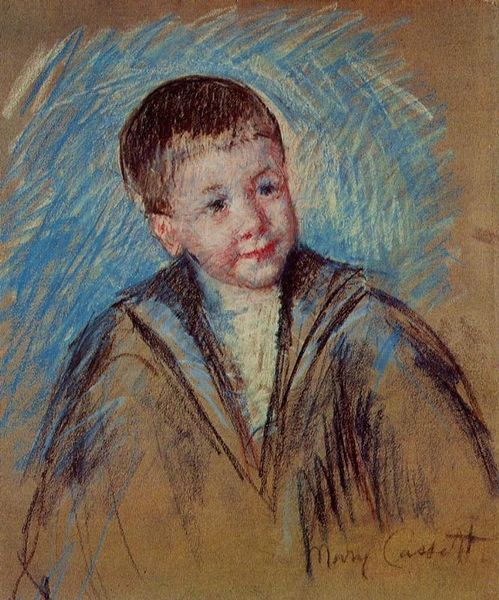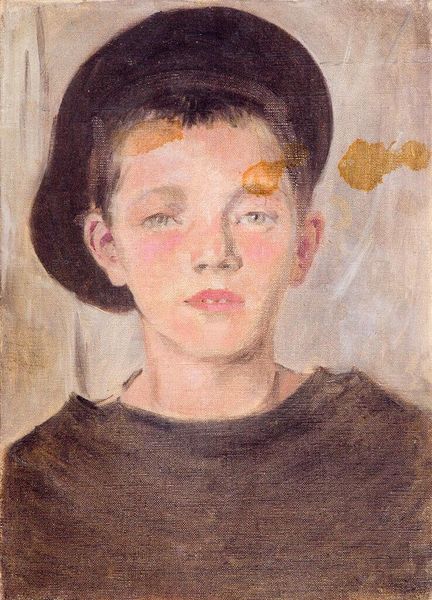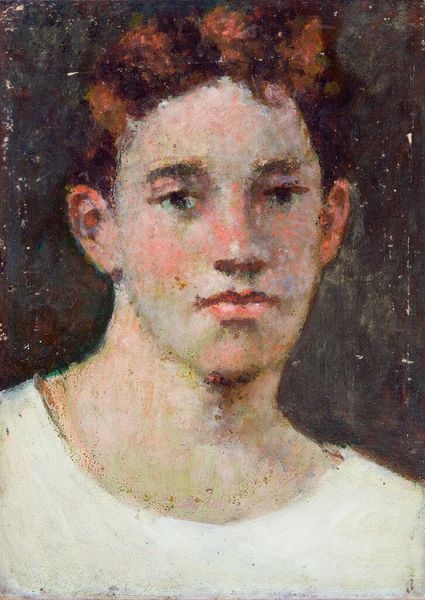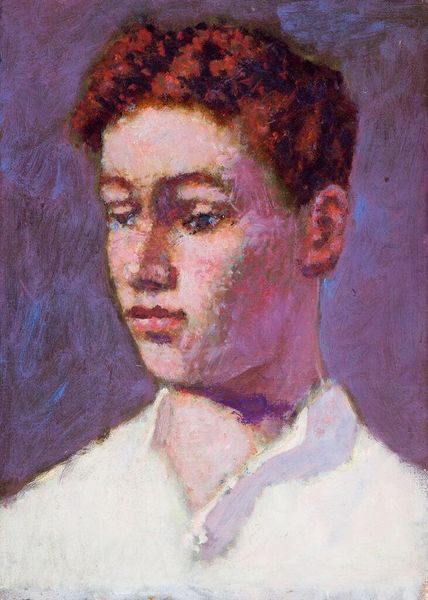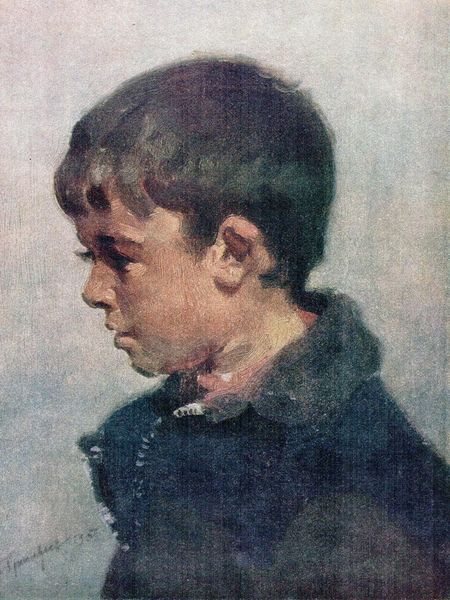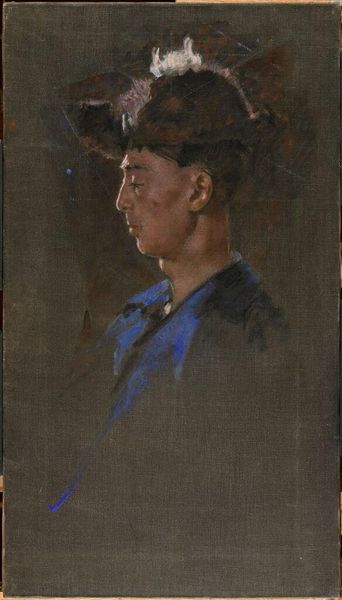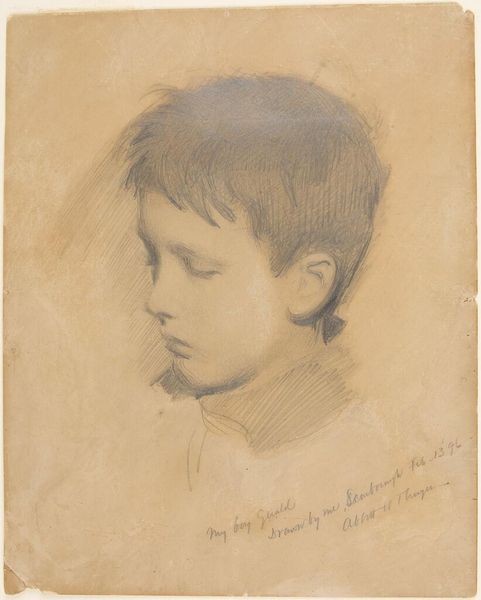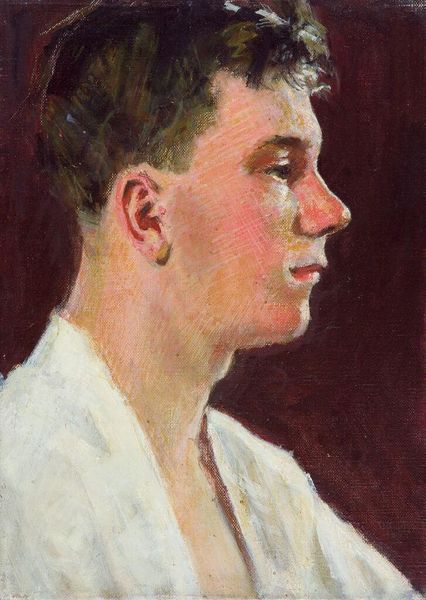
oil-paint, watercolor
#
portrait
#
impressionism
#
oil-paint
#
figuration
#
oil painting
#
watercolor
#
early-renaissance
#
portrait art
Copyright: Public domain
Camille Pissarro captured his son Lucien in watercolour, presenting us with more than just a portrait. A serene vase sits on a shelf behind the boy, a simple object elevated to a silent witness. Throughout history, the vase has echoed with meanings: from ancient Greek amphorae depicting heroic tales, to the still lifes of the Dutch Masters, brimming with earthly delights. Here, it is drained of overt symbolism, yet it persists. It's a shadow of cultural memory. Consider how this motif echoes in other works, from funerary urns to the vessels in Renaissance Annunciations, each subtly altering the vase's significance. The vase in Pissarro’s painting speaks to the enduring human need for order and beauty, its unassuming presence resonating with layers of history and the quiet emotion that binds father to son. It whispers to our subconscious, stirring feelings tied to heritage. The symbol resurfaces, evolves, and transforms in different historical contexts.
Comments
No comments
Be the first to comment and join the conversation on the ultimate creative platform.
